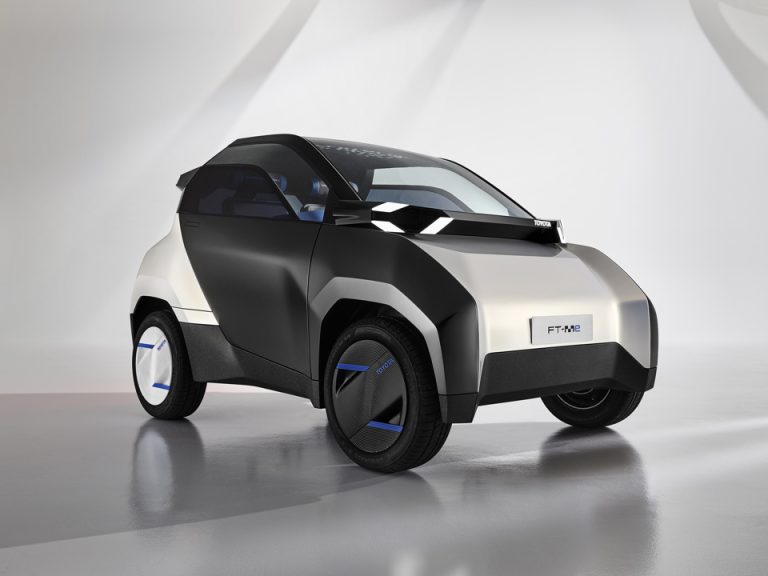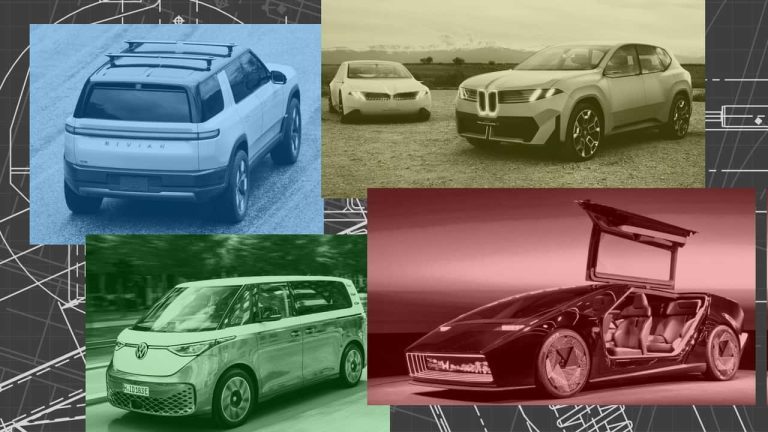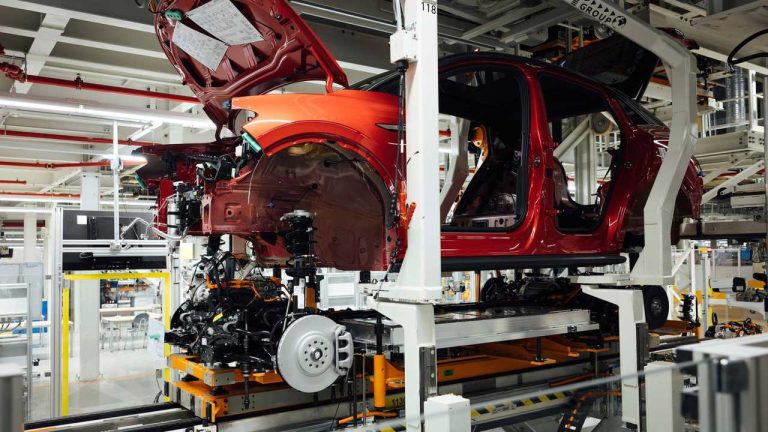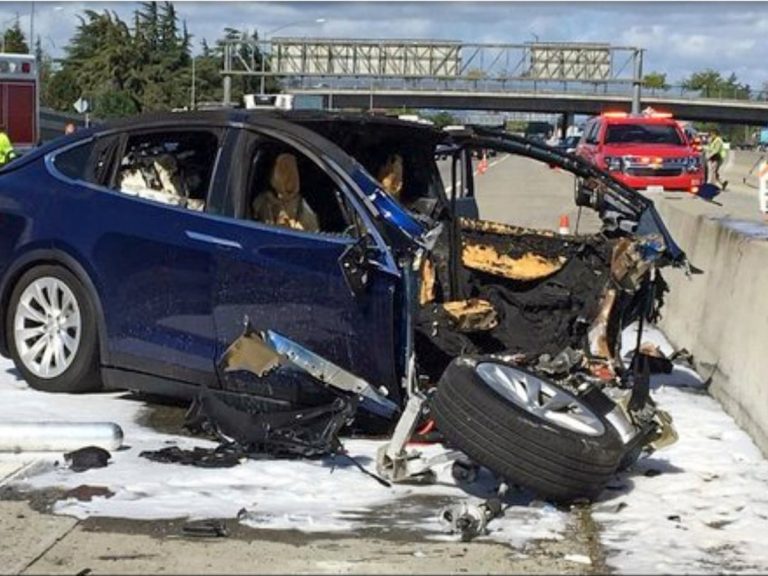Rivian Ushers In A New Age Of Electric Innovation With A Groundbreaking Manufacturing Facility


Rivian’s Bold New Chapter in Electric Vehicle Manufacturing
In a move that has caught the attention of the automotive industry and economic analysts alike, electric vehicle maker Rivian has announced the construction of its state-of-the-art production facility outside Social Circle, Georgia. This ambitious expansion plan not only aims to boost the production of next-generation vehicles such as the R2 SUV and R3 crossover, but it also highlights the company’s commitment to transforming the future of transportation. In this opinion editorial, we take a closer look at the many layers of this strategic investment—exploring its economic effects, environmental considerations, financial backing, and community integration, while also shedding light on the tricky parts and subtle details that make this development both exciting and challenging.
Unpacking Rivian’s Production Expansion Strategy
Rivian’s decision to set up a new production facility in Georgia has far-reaching implications for both the company and the wider electric vehicle (EV) market. By choosing this location, the company is positioning itself at the crossroads of innovation and production efficiency. The construction plan, slated to commence in 2026, envisions a facility with an eventual capacity of up to 400,000 vehicles a year. This strategic move not only keeps pace with growing demand for electric vehicles but also sets the stage for shaping the future of sustainable transportation.
Long-Term Vehicle Production and Capacity Goals
As the EV industry continues to mature, companies like Rivian face multiple twists and turns in planning and scaling production capabilities. The new Georgia plant is expected to gradually increase production capacity, starting with an initial focus on assembling vehicles tailored for a global consumer base, both domestically and overseas. Once full operations are reached during the second construction phase, the facility’s capacity could easily usher in a new era of mass EV adoption.
Key Milestones and Timeline Considerations
Central to understanding the project is the detailed timeline provided by Rivian. Construction is set to begin in 2026, with the plant poised to enter full-scale production by 2028. Such clearly defined milestones not only establish achievable targets but also help stakeholders and investors gauge the progress of this multibillion-dollar investment. Each phase of development carries its own set of challenging bits—from initial construction logistics to eventual production ramp-up—and executives are expected to manage these with precision.
Economic Impact and Job Creation Opportunities
One of the most talked-about aspects of Rivian’s new facility is its potential to create a significant number of jobs. Projections indicate that the plant will generate around 7,500 new positions by 2030, with an additional 2,000 roles emerging during the construction phase alone. This infusion of employment opportunities is seen as essential in revitalizing local economies and providing much-needed opportunities in the region.
Boosting Local Economies Through Employment
The introduction of thousands of jobs in Georgia promises to stimulate local economic growth. With increased employment comes a boost in local spending, improvements in community infrastructure, and increased demand for supporting services such as housing, education, and retail. The multiplier effect of such an investment is difficult to overstate, especially in rural and semi-urban areas where job opportunities have been on the decline. This initiative not only creates employment but also fosters a culture of innovation and skill development among the local workforce.
Spread of Economic Benefits Beyond Direct Employment
Beyond the direct jobs created by manufacturing processes, the project is expected to contribute to the local economy through a ripple effect. Many local suppliers, contractors, and service providers will benefit as they engage with Rivian’s supply chain and construction efforts. The spread of benefits will likely include improved local infrastructure and enhanced long-term economic stability, making it a win-win scenario for both the company and the surrounding communities.
Environmental Stewardship in EV Facility Design
The modern construction techniques and rigorous environmental management practices proposed for the Georgia plant have set a high standard for other EV manufacturers to follow. The site’s nearly 2,000-acre footprint is designed with careful respect for the local environment, reflecting Rivian’s commitment to sustainable operations and reducing its overall environmental footprint.
Emphasizing Sustainable Construction Practices
Rivian’s planning process incorporated measures to ensure that even with such a large-scale physical footprint, the impact on the surrounding ecosystem is minimized. The design takes into account natural landscapes and aims to integrate the facility into the local environment harmoniously. This social responsibility is essential in today’s world, where industrial expansion often meets resistance due to environmental concerns. The company’s plans to use state-of-the-art construction techniques underscore their dedication to reducing emissions, managing waste responsibly, and conserving natural resources.
Green Energy and Reduced Carbon Footprint
In an era where the shift from fossil fuels to renewable energy sources is more critical than ever, the new facility is poised to be a frontrunner in green production technology. By leveraging renewable energy where possible and employing futuristic energy management systems, the plant intends to maintain a reduced carbon footprint. This approach could help counterbalance the environmental impact of industrial growth, setting benchmarks for other EV manufacturers and related industries.
Financial Backing and Shifting Corporate Performance
The financial dimension of Rivian’s new facility is equally compelling. Although the company did not detail the financial specifics of this multibillion-dollar investment, recent financial maneuvers reveal a strategic pivot in the business’s approach to growth and long-term profitability.
Securing Substantial Financial Support
Earlier in January 2025, Rivian secured up to $6.6 billion in a loan package from the US Department of Energy’s Loan Programs Office. This critical financing not only underscores governmental support but also highlights the confidence that financial institutions and regulatory bodies have in the company’s ability to drive innovation in the EV space. Such backing is especially important given the nerve-racking financial environment many auto manufacturers face.
Shifting from Losses to Profitable Quarters
Adding to this financial narrative is Rivian’s recent quarterly performance. After posting a staggering loss of $606 million in the previous year’s fourth quarter, the company reported a turnaround with its first-ever quarterly gross profit of $170 million for the same period in 2024. Although the company still faces challenges—evidenced by an overall net loss for the year—the upward trajectory in revenue and the transformation of quarterly finances provide an optimistic outlook. The company’s journey from losses to profits is emblematic of the many twists and turns companies experience in high-stakes industries.
Community Engagement and Local Partnerships
Beyond the financial and production aspects, one of Rivian’s standout strategies is its approach to local community engagement. The company has been proactive in forming alliances with educational institutions, government bodies, and various community partners in Georgia. Such strategic engagement is designed to foster goodwill, ensure a steady supply of skilled labor, and help the local workforce adapt to new industrial technologies.
Building Bridges with Educational Institutions and Government Bodies
Rivian’s commitment to establishing meaningful relationships with local educational centers is crucial for long-term success. By collaborating closely with schools, colleges, and vocational training programs, the company is working to create a pipeline of skilled workers who are well-versed in both traditional manufacturing methods and innovative technological processes. This proactive approach not only benefits Rivian but also helps local communities in upskilling and adapting to the evolving demands of the modern job market.
Implementing Training Programs and Internship Opportunities
In tandem with educational partnerships, Rivian is expected to roll out various training and internship programs. These initiatives aim to nurture future talent and provide hands-on experience that is both practical and futuristic. With the EV industry evolving rapidly, investing in human capital is super important, ensuring that employees can keep up with emerging technologies and the shifting needs of the industry.
Anticipating the Broader Impacts on the Automotive and EV Sectors
While the factory expansion speaks directly to Rivian’s operational goals, its ripple effects are expected to extend well beyond the company’s immediate sphere. In today’s fast-paced automotive landscape, forward-thinking manufacturing investments like this serve as beacons of progress, inspiring other players in the industry to think creatively about scaling production while maintaining environmental and financial balance.
Shaping the Future of Transportation
The production facility in Georgia represents more than just an expansion of manufacturing capacity—it is a bold bet on the future of transportation itself. As electric vehicles become ever more central to global strategies for reducing carbon emissions, companies that successfully blend innovation with responsible practices will lead the charge. Rivian, with its mix of cutting-edge technology and sustainable design principles, is well positioned to become a leader in the transformation of transportation.
Encouraging Innovation in Manufacturing Practices
Innovation in the automotive space increasingly involves more than just the development of high-performance vehicles. It also encompasses the methods and processes used to build them. Rivian’s advanced facility is expected to incorporate modern manufacturing techniques, automated production lines, and digital integration—all of which may serve as benchmarks for the industry. Other manufacturers are likely to take note, setting off a chain reaction that could eventually redefine manufacturing standards across the board.
Industry Leadership and the Road Ahead
Rivian’s initiative is a telling sign of the broader shifts occurring in the automotive and manufacturing sectors. The company’s bold investment in setting up a new EV facility in Georgia is both a response to the increasing demand for electric vehicles and a proactive step to secure footholds in an intensely competitive market. It shines a light on the intricate balance between financial maneuvering, production strategies, community engagement, and environmental stewardship—a balance that is becoming ever more crucial in today’s business environment.
Balancing Innovation with Responsible Growth
At its core, the new facility represents the need to balance innovative production processes with socially responsible growth. As companies like Rivian continue to push the boundaries of what electric vehicles can achieve, it is equally important that they do so in a manner that respects local ecosystems, enhances community livelihoods, and maintains fiscal discipline. The path to sustainable success is layered with many challenging bits, from getting around regulatory hurdles to adapting to rapidly changing market dynamics.
Lessons for the Broader EV Landscape
Rivian’s upcoming project offers valuable lessons for the entire EV sector. The company’s clear focus on blending high-scale production capabilities with environmental mindfulness, along with its dedication to local job creation and community engagement, sets a precedent that could well be adopted by others. For policymakers, business leaders, and industry watchers alike, the development serves as a case study in how to effectively manage production expansion while addressing the tangled issues that come with transformative growth.
Insight into the Future of Electric Mobility
The future of the automotive market hinges on how key players adapt and innovate in the face of rapid technological shifts and evolving consumer demands. Rivian’s new facility is expected to play a crucial role in shaping the future of electric mobility by integrating advanced production technologies with sustainable practices and robust financial planning. By doing so, it is not only paving the way for its own expansion but also laying the groundwork for the broader adoption of electric vehicles on a global scale.
Anticipating Market Shifts and Consumer Demand
The exponential growth of the EV market is driven largely by increasing consumer awareness and favorable regulatory measures. As governments worldwide push for stricter emissions standards and consumers seek smarter, more sustainable transportation options, the demand for electric vehicles continues to soar. Rivian’s commitment to scaling its production capacity timely reflects a deep understanding of these market dynamics. The company is preparing itself to meet the increasing appetite for environmentally friendly vehicles, thus setting itself apart in a crowded marketplace.
Preparing for Rapid Technological Advancements
In addition to meeting current market needs, Rivian’s new facility is designed to remain agile in the face of technological advances. Integrating robotics, artificial intelligence, and digital automation, the plant is on track to become a hub for research and development in EV manufacturing techniques. As technological trends continue to evolve rapidly, the ability to quickly adapt production methodologies will be key in staying ahead of competitors.
Challenges and Considerations on the Journey Forward
Despite the optimism surrounding Rivian’s grand expansion, there remain several tricky parts and complicated pieces that the company must manage. From securing continuous funding to dealing with potential regulatory shifts and market uncertainties, the challenges on the road ahead are significant. Yet, with a clear strategic focus and ongoing collaboration with community and government partners, many of these obstacles can be reframed as opportunities for further innovation and growth.
Identifying and Overcoming Price Volatility and Supply Chain Hiccups
One of the major areas of concern that companies in the manufacturing and EV sectors must address is the unpredictability of material costs and supply chain disruptions. The current global landscape, characterized by nerve-racking price fluctuations and occasional supply delays, demands that companies establish robust contingency plans. Rivian’s diversified procurement strategy and its commitment to local sourcing where possible are designed to help the company figure a path through these uncertain times. By maintaining flexibility in its supply chain, the company is better equipped to handle sudden market changes while still meeting production deadlines.
Managing Regulatory and Policy Changes
The global automotive industry has seen many policy shifts in recent years. As governments implement new regulations to combat climate change and foster clean energy solutions, automotive manufacturers must steer through a maze of legal and regulatory requirements. Rivian’s proactive engagement with both local and federal bodies is meant to ensure that the company stays ahead of these legislative developments. By encouraging open dialogue with policymakers and actively participating in industry groups, Rivian is taking essential steps to manage your way through this evolving regulatory landscape without being blindsided by sudden changes.
Adapting to Workforce Transformations
As the industry moves towards a more streamlined and technologically advanced mode of production, workforce transformation is inevitable. The skills required for modern EV manufacturing differ substantially from those needed in traditional automotive production. To address this, Rivian’s planned collaboration with regional educational institutions will be crucial. Training programs, job fairs, and apprenticeship opportunities are some ways the company intends to upskill local talent. While the transition may be intimidating for some workers, it also opens up new pathways for career growth and professional development, ultimately benefiting both the company and the wider community.
Key Takeaways and the Road Ahead
Rivian’s comprehensive plan for its new production facility in Georgia is a prime example of a modern manufacturing strategy that unites cutting-edge technology with responsible business practices. The initiative reflects the company’s confidence in meeting future market demands while staying committed to community development and environmental sustainability. By addressing the tricky parts—such as supply chain challenges, regulatory shifts, and workforce training—with innovative solutions, Rivian is setting new standards for the EV and automotive sectors.
Summary of Strategic Advantages
- Strategic Location: Leveraging Georgia’s industrial landscape to build an advanced manufacturing hub.
- Job Creation: Promising significant employment opportunities that will bolster local and regional economies.
- Sustainable Construction: Focusing on modern, environmentally conscious building practices to minimize ecological impact.
- Financial Resilience: Securing major financial backing and showing improved quarterly performance metrics.
- Community Integration: Prioritizing partnerships with educational institutions and local government to support workforce development.
Opportunities for Industry Leaders
Rivian’s journey demonstrates how a company can combine financial prudence, manufacturing innovation, and community engagement to push the boundaries of what is possible in electric mobility. For other companies in the automotive sector, the lessons gleaned from this expansion offer a roadmap to success. By focusing on key priorities—such as sustainability, technological adaptation, and proactive stakeholder engagement—businesses can set themselves apart in an increasingly competitive market.
Final Thoughts: A Future Driven by Innovation and Responsibility
Looking ahead, the evolution of electric vehicles will depend largely on the ability of manufacturers to merge cutting-edge production methods with a deep sense of social and environmental responsibility. Rivian’s groundbreaking project in Georgia is a microcosm of this broader trend. The new facility is more than just a building—it’s a statement about the company’s vision for a cleaner, more efficient, and economically vibrant future.
Embracing the Journey of Transformation
The road to widespread electrification is layered with many twists and turns, from financial challenges to the need for rapid technological adaptation. However, if companies continue to invest in innovation and take a closer look at the subtle details that make a difference, the future of the automotive industry looks promising. Rivian’s initiative is an example of how embracing both the exciting opportunities and the intimidating challenges can lead to a dynamic and sustainable transformation in the way vehicles are built and powered.
Investing in a Greener Tomorrow
Ultimately, Rivian’s expansion is more than just an industrial development—it’s an investment in a future where technology and nature coexist harmoniously. As the market for electric vehicles expands, every step taken towards sustainable production and community collaboration sends a powerful message: the future of mobility is not only electric, but it’s also built on a foundation of responsibility, innovation, and shared prosperity. In a world full of tangled issues and overwhelming challenges, ventures like this light the way forward, offering hope and direction for the entire industry.
About the Author
This opinion piece is authored by an industry expert with a keen understanding of small business trends, industrial manufacturing nuances, automotive innovations, electric vehicular advancements, company tax strategies, and economic developments. With a passion for uncovering the subtle details behind transformative industry shifts, the author offers insights meant to inform and inspire stakeholders across the business spectrum.
In conclusion, Rivian’s upcoming facility in Georgia is an embodiment of forward-thinking industrial design fused with crucial economic and social benefits. The careful orchestration of financial planning, environmental protection, and community involvement sets a compelling precedent that resonates deeply within today’s complex business landscape. As we watch this development unfold, one thing is clear—the journey to a sustainable and efficient future is well underway, and Rivian is firmly in the driver’s seat.
Originally Post From https://www.just-auto.com/news/rivian-ev-plant/
Read more about this topic at
Building for R2 – Rivian Stories | Electric Vehicle Adventures
It’s ‘do or die’ for electric vehicle maker Rivian as it breaks …




